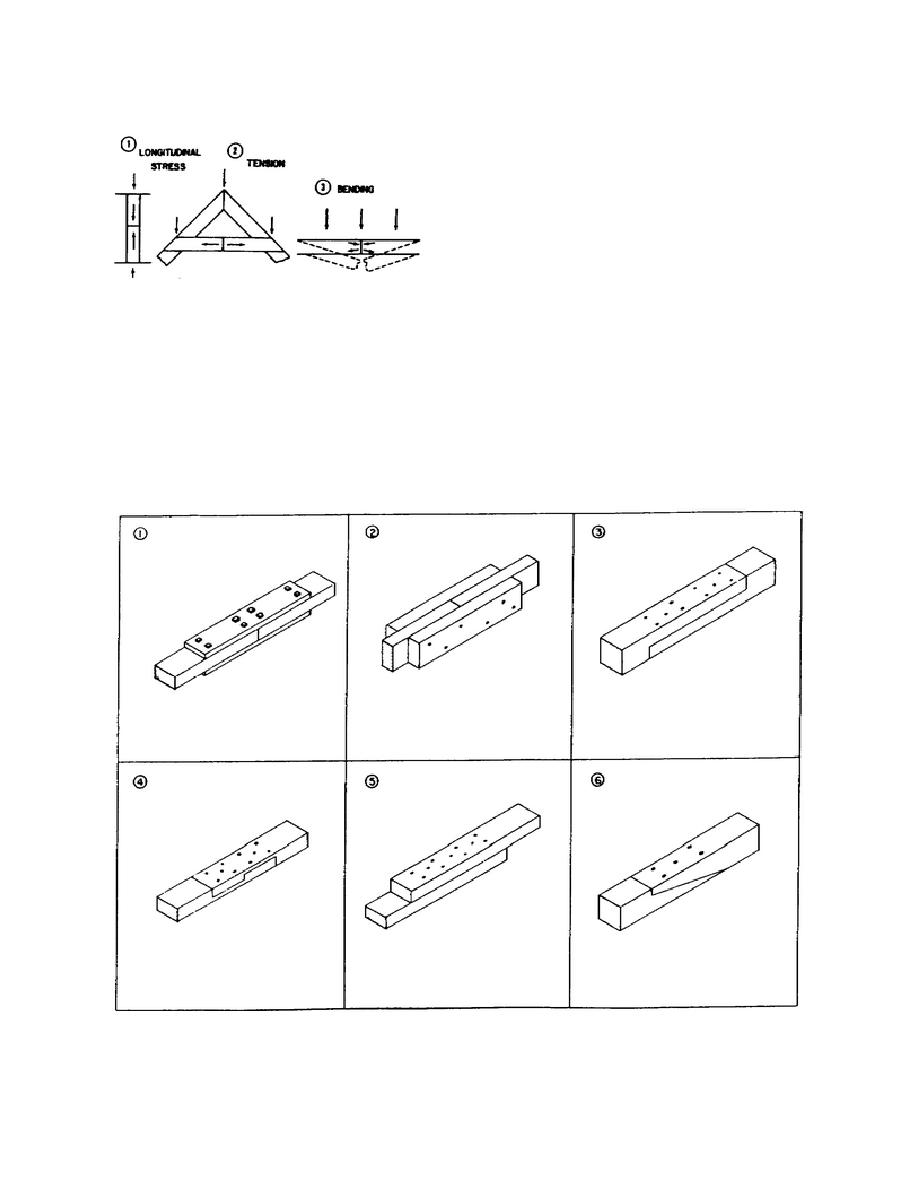
(2) Plain splice. A hasty substitute for
the square splice is the long plain splice (5, fig. 1-11).
A long overlap of the two pieces is desirable to
provide adequate bearing surfaces and room for
enough nails or other fasteners to compensate for the
lack of shoulder lock.
c. Bend-resistant splices.
Horizontal
timbers supporting weight are subject to compression
of the upper side that has a tendency to crush the
Figure 1-10. Splice stresses.
fibers, and to tension along the lower side that tends
to pull the fibers apart as shown diagramatically in 3,
1-10). Tension splices are designed to provide
figure 1-10. The bend-resistant splice designed to
increased bearing surface and additional shoulders
meet these conditions is constructed by cutting
within the splice to resist the buckling tension.
oblique complementary tongues or laps in the ends of
two pieces of timber (6, fig. 1-11). To absorb
(1) Square splice. The square splice is
compression stress, the end of the upper tongue is cut
a modification of the compression-resistant halved
square to butt against a corresponding square step or
splice. Complementary notches are cut in the
shoulder at the base of the complementary lower
tongues to provide an additional locking shoulder (4,
tongue. The end of the lower tongue is
fig. 1-11). It may be greatly strengthened by adding
fishplates or scabs.
Figure 1-11. Compression, tension, and bending-resistant splices.
1-14



 Previous Page
Previous Page
